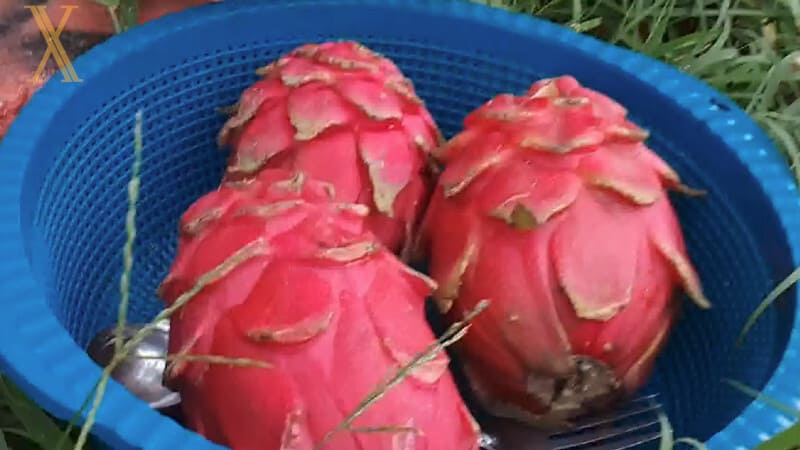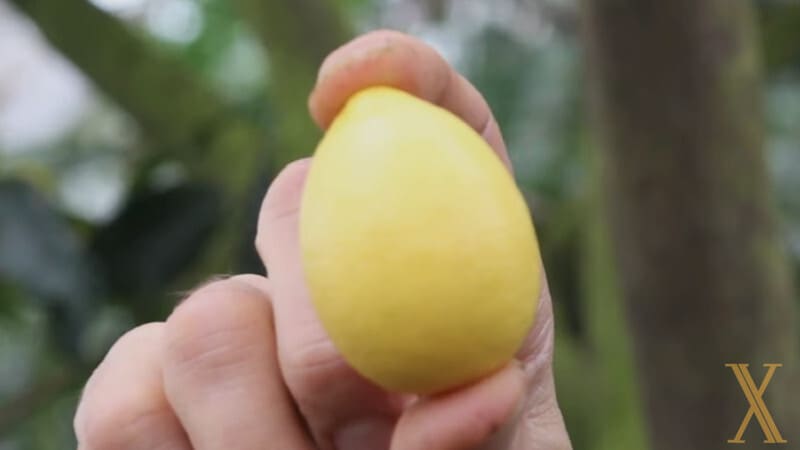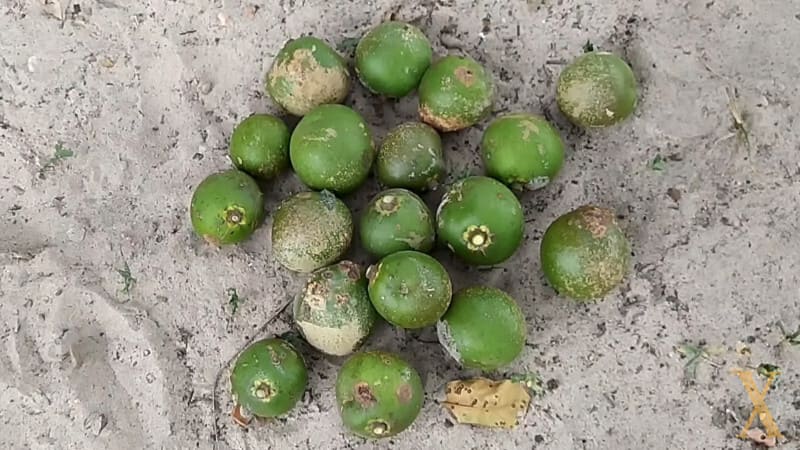
The babaco is a fruit very similar to papaya. Its scientific name is Carica pentagona or Vasconcellea × heilbornii, with a citrus and refreshing flavor.
It is considered an exotic fruit because it allows a pleasant sensation on the palate of those who taste it through its flavor, which is viewed as a combination between pineapple and papaya.
Origin and Current Cultivation
The babaco hybrid shrub native to Ecuador is a cross that results from two species of another fruit, such as Carica stipulata H toronche and Carica pubescens L chamburo.
There are many regions where this plant is grown, such as Peru, the Middle East, New Zealand, Spain, Greece, and Israel. It can be grown in greenhouses or outdoors; everything depends on the climate where the planting is intended.
The babaco is a hybrid fruit that can only reproduce vegetatively or asexually since, due to its formation and growth, it is a parthenocarpic fruit; it does not produce seed.
Planting this fruit is especially preferred in deep soils and is not grown in saline soils. The ground must have a sandy clay texture with a high organic matter content. Its growth is suitable in warm or subtropical regions.
Physical characteristics
Babaco is a semi-perennial, semi-woody, and shrubby plant. It has a stem of approximately two or more meters, is cylindrical, and in its growth process in the young period, is green and, in adulthood, tends to change to grayish brown color.
Its roots are vertical and fleshy, absorbent and delicate, allowing them to absorb nutrients adequately.
It has large inserted leaves with a certain amount of lobes, presenting a petiole of adequate size with well-marked ribbing.
In addition, the leaves have an appropriate greenish coloration with alteration of tonalities, depending on the season, the development, and the luminosity the plant receives during the development phase.
The fruit is a berry with no seeds and does not merit pollination in its development process. The shape it presents is elongated pentagonal, approximately 30 cm long. However, a single plant can contain several fruits of different sizes.
The flowers are usually white–yellowish–greenish, solitary, and female, with sepals in dark green.
Taste
This fruit, the babaco, is usually described as a fruit with a delicate flavor and slightly acidic and refreshing. Its taste is similar to papaya, strawberry, and pineapple. It has a cucumber shape but is pentagonal.
The consumption of this fruit is recommended to be fresh and ripe, in addition to having a primordial characteristic, and is that it does not have seed; therefore, you can take advantage of all the pulp.
Nutrition Information
This fruit has a high content of minerals, which greatly favor the body. In addition, it contains vitamins A, C, and E.
Its nutritional treatment is as follows:
| Component | Content per 100 gr |
| Water | 95 g |
| Energy | 22 Kcal |
| Protein | 0.71 g |
| Total Fat | 0.21 g |
| Cholesterol | 0 mg |
| Carbohydrates | 4.51 g |
| Fibre | 2.3 g |
| Lipids | 0.1 g |
| Calcium | 14 mg |
| Iron | 0.31 mg |
| Potassium | 165 mg |
| Fósforo | 7 mg |
| Sodium | 1 mg |
| Vitamin A | 27 mg |
| Vitamin C | 28 mg |
| mg = microgram | |
| g = gram | |
| Kcal = Calories |
Properties and Benefits
In this opportunity, we offer a series of information that is of great interest and which makes the consumption of this fruit intensely favorable for health, so we will mention the most outstanding:
It facilitates the absorption of iron: which is why it controls the production of hemoglobin, guaranteeing the passage of oxygen from the lungs to the body.
Improves sleep: within its properties, this fruit has melatonin, which is used in people with sleep deficit or disorder, so consuming this fruit helps prevent insomnia.
It is an excellent source of energy: due to the high levels of carbohydrates in this fruit, it is responsible for providing the power necessary for the proper functioning of the body, in addition to being very low in fat.
Healthy hair: thanks to the nutrients it has, it allows you to give shine, and luminosity to your hair, since it nourishes the capillary area of your scalp.
Improves digestion: this fruit has an enzyme that enhances digestion capacity, avoids gas, and relieves constipation thanks to the amount of fiber it has.
The immune system: strengthens the immune system keeping the body away from bacteria, viruses, and diseases.
Prevents diabetes: according to the nutritional values of babaco, sugar levels are low, which favors the appearance or treatment of diabetes; for this, it is recommended to consume the fruit fresh and whole.
Risks of stroke: consuming babaco reduces the chances of a stroke because this fruit has vitamin C and contributes to preventing diseases and maintaining the appropriate blood pressure values.
Uses
This fruit for having a large pulp without seeds; It can be consumed naturally and fresh, in sauces, salads, natural or cold, and can even be prepared in cooking to make yogurt, ice cream, jams, biscuits, or rich dishes with meats and ham.
In addition, if honey or sugar is added, you can make rich, soft drinks or smoothies because the sweetness increases its flavor.
You can create many recipes with babaco, and we will upload them often, so keep in touch with us regularly. Meanwhile, discover any other fruit by clicking on the following posts.





